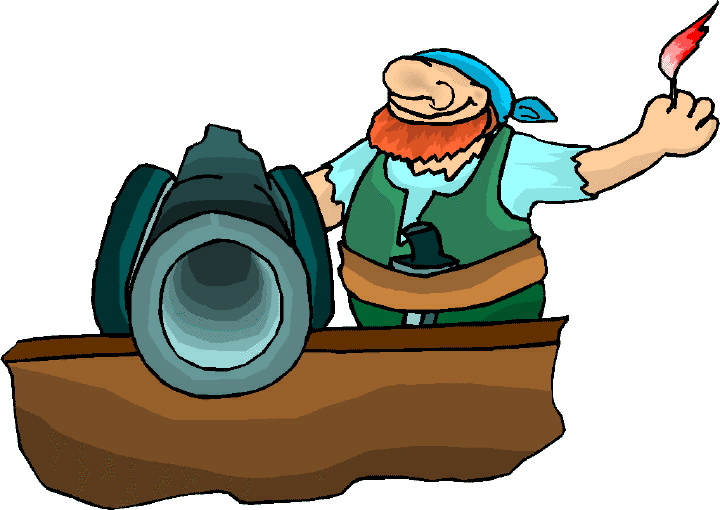 Pirates and Privateers Pirates and Privateers
The History of Maritime
Piracy
Cindy Vallar, Editor
& Reviewer
P.O. Box 425,
Keller, TX 76244-0425
    
Books for
Adults ~ Art, Music, Poetry, & Stories

Charles Johnson’s General History of the Pyrates and
Global Commerce
By Noel Chevalier
Bucknell University, 2025, ISBN 978-1-68448-553-6,
US $34.95
Available in a variety of formats
    
We tend to view pirates of the past through colored
lenses tainted by the present. What we believe may
or may not be true, not just because of this
significant passage of time but also because an
18th-century author interlaced fact and fiction to
create a bestseller – which was most likely his
original intent. Today, this work is more often than
not viewed as a primary historical document, one
written by a contemporary of the pirates, and he may
have been one or knew some personally. But what if
this collection of “true-crime stories” is far more
complex than that? Instead of writing a simple
biography on pirates of the day, the author actually
wished to provide commentary on commerce, ethics,
the law, and politics in the early 1700s.
This is the premise behind Chevalier’s latest book.
He makes it clear that when we talk about A
General History of the Pyrates, we are not
discussing a single edition. This bestseller was
sold in different renderings over the course of four
years and differences exist between them. Chevalier
examines four editions – all published over a
four-year period – rather than just using the first
published book. These are the original version,
published in May 1724 by Charles Rivington; a second
edition published in August of that year by Thomas
Warner; a third book in 1725 by the same publisher
that added an additional pirate; and the 1728
version printed by Thomas Woodward, which consisted
of two volumes.
While Chevalier clearly demonstrates that General
History is actually a multi-layered book, he
also delves into scholars’ attempts to resolve a
mystery surrounding this book. For about three
centuries, the true identity of its author, Captain
Charles Johnson, has been guessed at but never
positively pinpointed.
Although the title suggests that Johnson’s book is a
history, it’s really a collection of biographies on
pirates who lived during a short time span that has
become known as the “golden age of piracy.” Those
who read below the surface will find references to
points of particular interest during the 1720s:
colonialism, ethics, politics, society, and trade.
According to Chevalier, “Johnson’s General
History uses its pirate subject as mirrors of
the age, ultimately suggesting that, odious as they
are, pirates differ from better-placed criminals
only in class, and in the hard punishments meted out
to them that their betters almost always escaped.”
(xii)
Trade, colonialism, and piracy are intricately
entwined, for it's impossible to have one without
the others. While the expansion of markets and
products lead to greater wealth, this wealth comes
at a cost because some trade relies on human
trafficking and inhuman working conditions.
Johnson’s commentary may have been about the world
in which he lived, but at least some of these
observations can be associated with current
situations. For example, Sir Robert Walpole was a
political powerhouse whose dominance then has
relevance to government today. Another similarity
involves socioeconomic realities. Changing attitudes
are equally relevant, for its easy for friends to
become enemies and vice versa.
This volume – part of the Transits: Literature,
Thought & Culture, 1650-1850 series – is divided
into two sections: “Monsters” and “Great Men” with
an interlude that discusses social ethics of the
1720s. Pirates are not stick figures; they are
multi-faceted beings just like any other human
being. The “Monster” chapters show how General
History pirates fit that persona. They
threaten the traditional social order. They don’t
conform to expectations. They live on the margins.
This is why they are monsters who need to be
prosecuted and eradicated. Chevalier selects several
of Johnson’s pirates to demonstrate this:
Blackbeard, Mary Read and Anne Bonny, and Edward
Low.
The interlude explores the ethics of wealth and
colonial expansion. It may seem odd, but pirates
were essential to global commerce. There is
ambiguity here because some colonists and merchants
welcomed the trade pirates brought, whereas England
saw them as interlopers. The latter must be
punished; the former must conform. Chevalier focuses
on several period publications and the aftermath of
the South Sea Bubble. Piracy, however, is not a key
subject in the interlude; what he discusses is
pertinent to General History and how
monsters can also be “Great Men.”
Just because the government or society sees pirates
as monsters, they don’t necessarily see themselves
that way. While similarities exist between merchants
and pirates, it’s not okay for the latter to act
like the former. Doing so threatens the social order
and makes it difficult for respectable people to
understand what “greatness” means. For example,
Johnson’s pirates are shown as “intelligent,
resourceful, capable leaders,” but in the blink of
an eye, they are also portrayed as “violent and
cruel.” (110) This ambiguity is illustrated with
Bartholomew Roberts, whose piratical activities and
captaincy Chevalier likens to a professional
businessman. This section also looks at how England
developed a proper manner for punishing pirates –
one that was public and ritualistic.
To enrich the narrative there are illustrations and
an appendix listing the various editions of General
History. Endnotes, a bibliography of primary
and secondary sources, and an index are included.
Chevalier mentions in his preface that he hopes to
“open a fuller exploration of General History
and its complexities.” (xii) He certainly achieves
this, providing readers of Johnson’s book with new
ways to examine the pirates within the framework of
the society in which they operated. Instead of just
seeing General History as an historical
document, Chevalier shows that it has far greater
depth and is an important example of period
literature. As he phrases it, the book “is a study
of the phenomenon of piracy as it has manifested
itself in Britain between 1714 and 1724 –
specifically, the years following the War of the
Spanish Succession, the arrival of the Hanoverian
monarchy, and the ascendancy of the Whig
government.” (28-29) This is key because these and
other events pertaining to global commerce impact
how Johnson portrays the pirates in the various
editions. Although a number of articles have been
written about Johnson and General History,
Chevalier is the first to examine the book in
greater depth as a literary work. In doing so, he
illuminates what readers may not understand and
provides context to better enrich the reading
experience. This allows us to see these pirates as
Johnson saw them and to better understand where our
ideas of piracy come from.
Even if studies of 18th-century literature aren’t
your forte, Chevalier’s book is essential reading.
Without it, your understanding of golden age pirates
lacks depth because what you read and who they truly
were are not and cannot be the same. Highly
recommended.
Review Copyright
©2025 Cindy Vallar

Click to contact me
Background image compliments
of Anke's Graphics |

